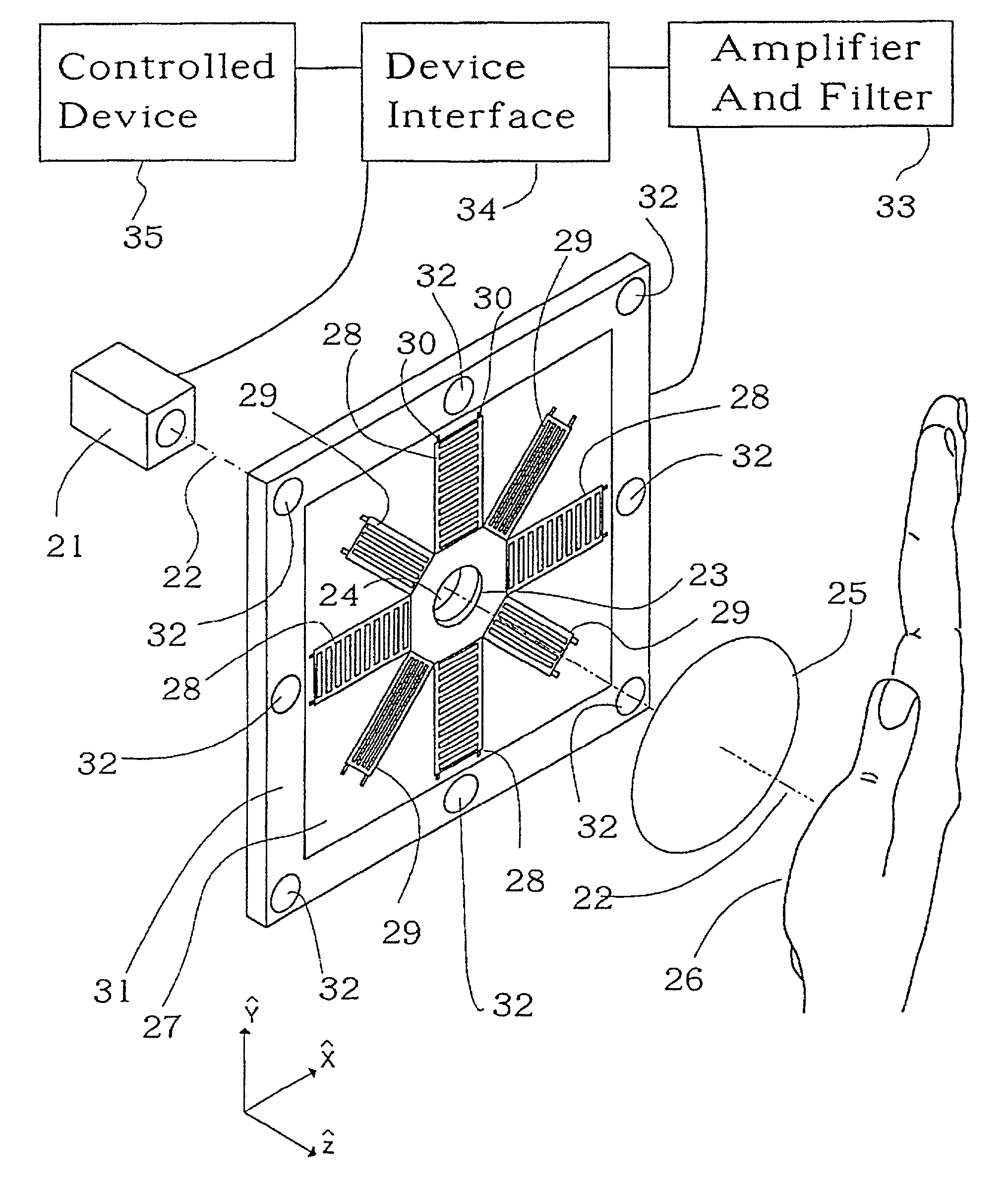Optically based machine input control device
a control device and optical technology, applied in the direction of input/output for user-computer interaction, instruments, computing, etc., can solve the problems of small space occupation, sensitive control through small hand motions, and mechanical wear, and achieve the effect of simple construction
- Summary
- Abstract
- Description
- Claims
- Application Information
AI Technical Summary
Benefits of technology
Problems solved by technology
Method used
Image
Examples
Embodiment Construction
[0040]Referring to FIG. 1, an apparatus suitable for an optically based human-machine interface input control device comprises a light source 1, which produces optical radiation 2 which is transmitted through an aperture 4 in the center of a pattern analyzer 5, and a directing lens system 6, resulting in an illuminated region on a diffusely reflecting surface 7. A portion of the diffusely reflected light may be redirected back toward the pattern analyzer 5 by a collecting lens system 6 to form a pattern at the surface of the pattern analyzer 5. The diffusely reflecting surface 7 may be translated along or rotated about one or more of the three orthogonal axes, causing the irradiance distribution of the pattern illuminating the surfaces of the pattern analyzer array 5 to be modified in a related manner. The pattern analyzer 5 generates electrical signals representing localized measurements of the direction, rate of motion, and irradiance distribution of an optical pattern. Electrical...
PUM
 Login to View More
Login to View More Abstract
Description
Claims
Application Information
 Login to View More
Login to View More - R&D
- Intellectual Property
- Life Sciences
- Materials
- Tech Scout
- Unparalleled Data Quality
- Higher Quality Content
- 60% Fewer Hallucinations
Browse by: Latest US Patents, China's latest patents, Technical Efficacy Thesaurus, Application Domain, Technology Topic, Popular Technical Reports.
© 2025 PatSnap. All rights reserved.Legal|Privacy policy|Modern Slavery Act Transparency Statement|Sitemap|About US| Contact US: help@patsnap.com



